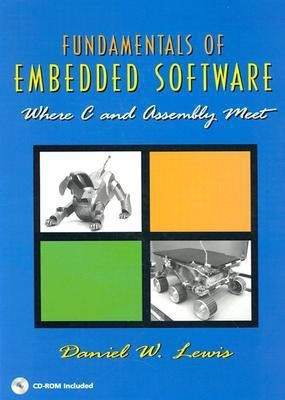Fundamentals of Embedded Software - Where C and Assembly Meet (With CD) 1st Edition(English, Paperback, Lewis Daniel W.)
Quick Overview
Product Price Comparison
For sophomore-level courses in Assembly Language Programming in Computer Science, Embedded Systems Design, Real-Time Analysis, Computer Engineering, or Electrical Engineering curricula. Requires prior knowledge of C, C++, or Java. This book is intended to provide a highly motivating context in which to learn procedural programming language. Using a non-product specific approach and a programming (versus hardware) perspective, this text lays a foundation that supports the multi-threaded style of programming and high-reliability requirements of embedded software. Reflecting current industrial applications and programming practice, it focuses on the more modern 32-bit protected mode processors and on C as the dominant programming language-with coverage of assembly and how it can be used in conjunction with, and support of, C. Salient Features An alternative to a more traditional course on assembly language programming. Allows instructors to easily introduce embedded systems into an already packed curriculum, and provides a way to cover the procedural style still necessary in some upper-division courses. The material reinforces students' comprehension of parameter passing, scope, and especially memory allocation schemes. Use of the PC as a platform for learning about processor architecture, assembly language, and embedded software. Familiarizes students with the dominant Intel architecture they will ultimately encounter, and allows instructors to offer an associated laboratory component without investing in specialized single-board computers. Emphasis on the 32-bit protected mode of the Intel processor-Unlike most other texts on Intel assembly (which cover the 16-bit real mode). Used in all the examples of low-level assembly language support routines, such as interrupt service routines. Gives students experience with the protected mode which is more representative of current programming practice. A focus on C (versus assembly)-Most of the code in the text is written in C because many industrial applications that were traditionally implemented in assembly are now programmed in C, and C has become the language of choice for embedded software. Covers processor organization and assembly language only from a ŌĆ£need-to-knowŌĆØ point of view rather than as a primary objective, and presents assembly in terms of how to write interrupt service routines and low-level functions that interact with C programs. Prepares students for on-the-job demands they will face in the real-world. An abundance of examples in C throughout. Features a chapter highlighting those features of C that are important for embedded applications. Provides students with practical applications of concepts and helps ease the paradigm shift to C for those with background in C++ and Java. Homework problems-In addition to short homework problems, the book features 11 in-depth programming assignments. Gives students abundant hands-on practice. Accompanying software tools (on CD-ROM)-Includes: 1) source code for a library of run-time utilities and a boot loader developed by the author used to develop embedded applications on the PC, 2) copies of GCC and NASM, the C compiler and assembler used in the text, 3) a copy of MIX Software's Multi-C non-preemptive multithreaded run-time kernel, 4) a copy of the uCOS preemptive multithreaded run-time kernel, 5) source code to support the lab experiments given in the text, and 6) PowerPoint slides to accompany the chapters. Provides convenient access to programming tools for both students and instructors.


